When San Antonio architect Cotton Estes and her partner Mike Long purchased almost half an acre of land less than a mile from the Alamo in 2021, the site was an abandoned bus transfer station.
For decades, bus drivers pulled their giant motorcoaches in and out of the six bays, loading, unloading, spewing exhaust and compacting the asphalt driveways. In addition to pavement aplenty, the surrounding “yard” hosted uninvited patches of Bermuda grass, dandelions, KR Bluestem and Chinese henbit.
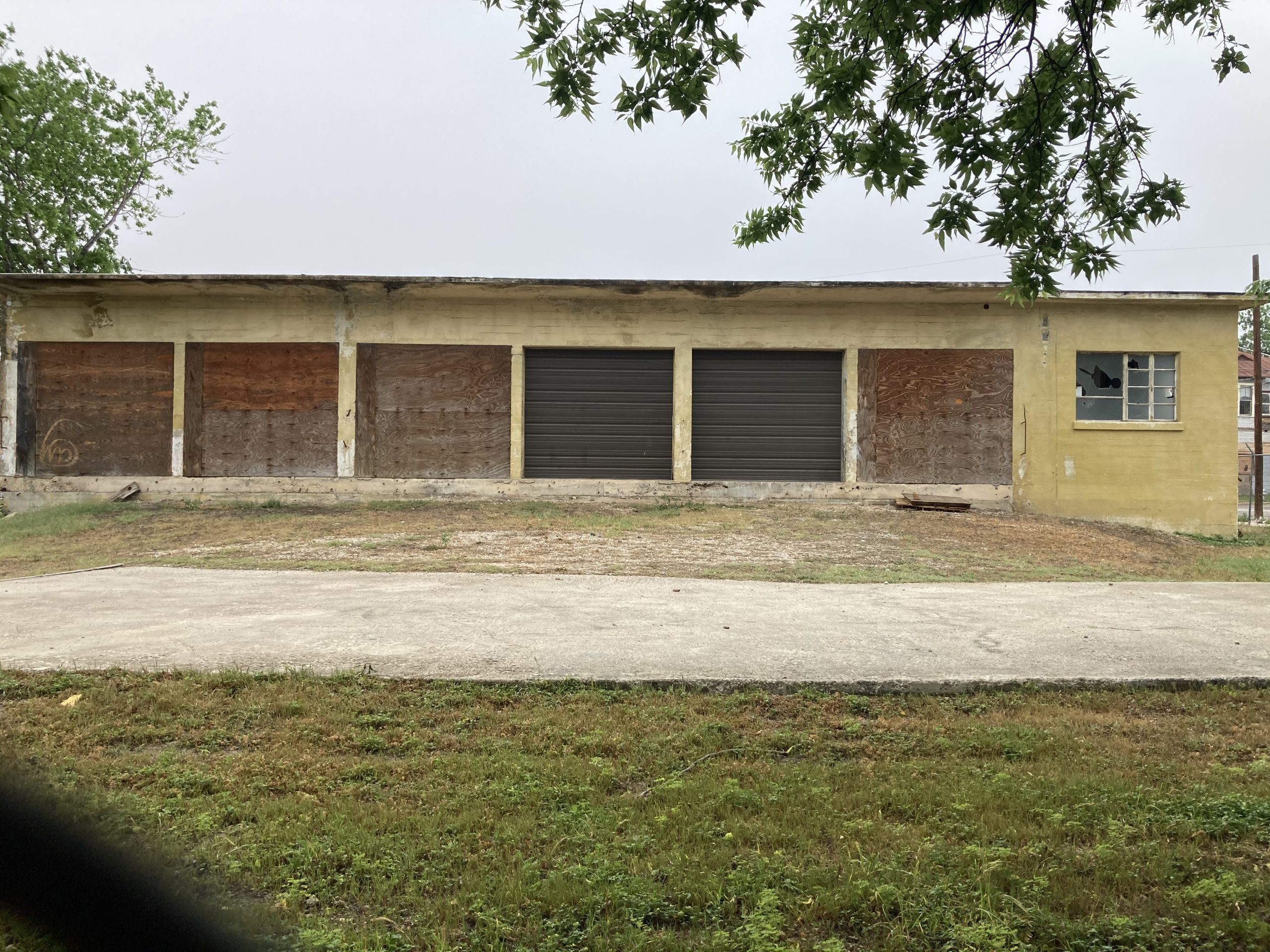
2021: The Space Station. –Photo courtesy Cotton Estes
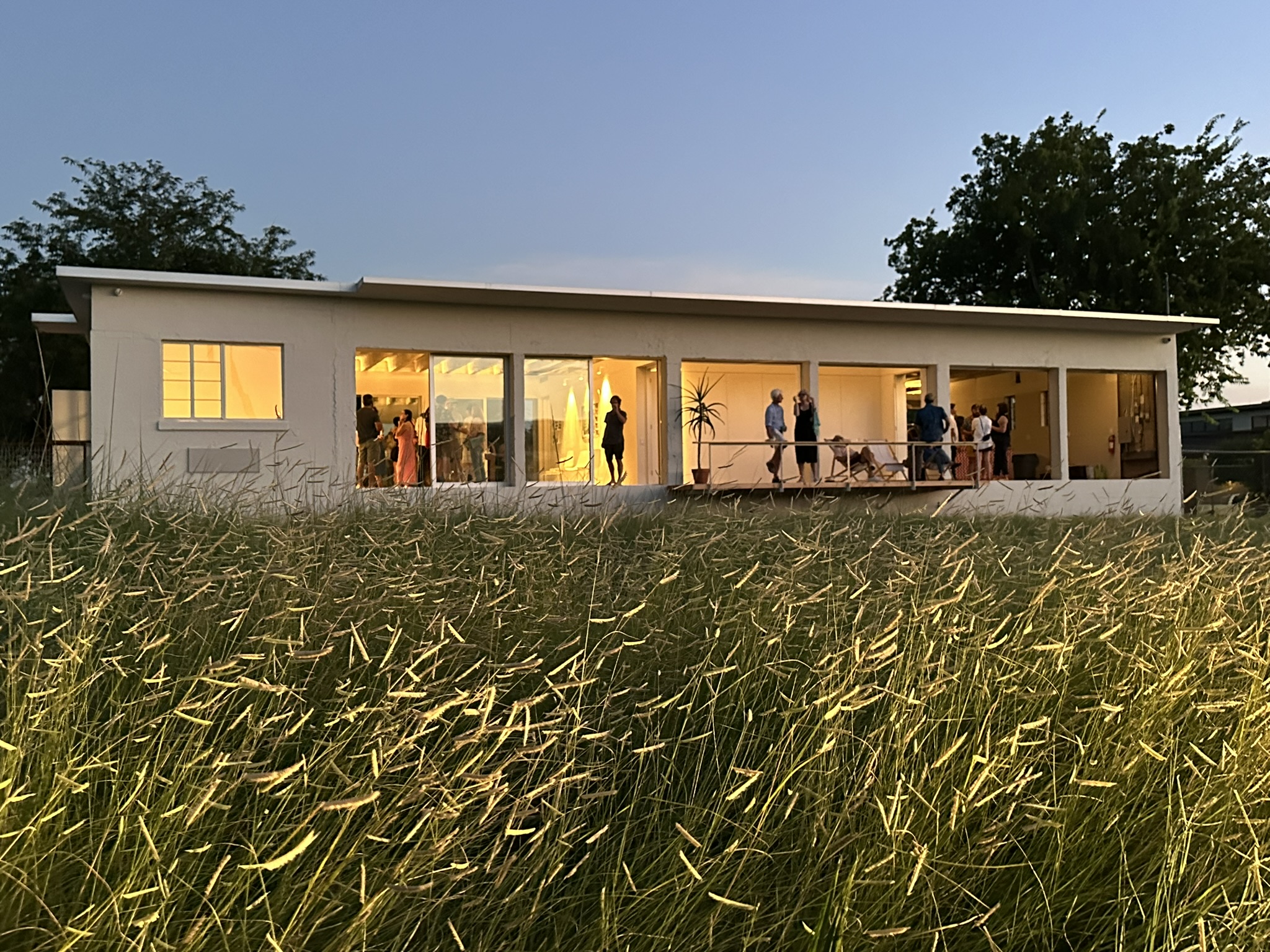
TODAY: Blue grama grass going to seed in front of the Space Station in downtown San Antonio. –Photo courtesy Cotton Estes
Three years later, Estes and Long are enabling a stunning transformation.
Recast as the “Space Station,” the former bus station has been rebooted as work spaces that house two tenants, Long’s custom home building workshop, and Estes’ architecture studio.
Each space features automatic metal slatted garage-style doors on opposite walls, allowing those inside to adjust the sunlight and breezes gracing the room. The studios look onto what Estes affectionately described as a “prairie cloud,” stands of native grasses wafting in the wind.
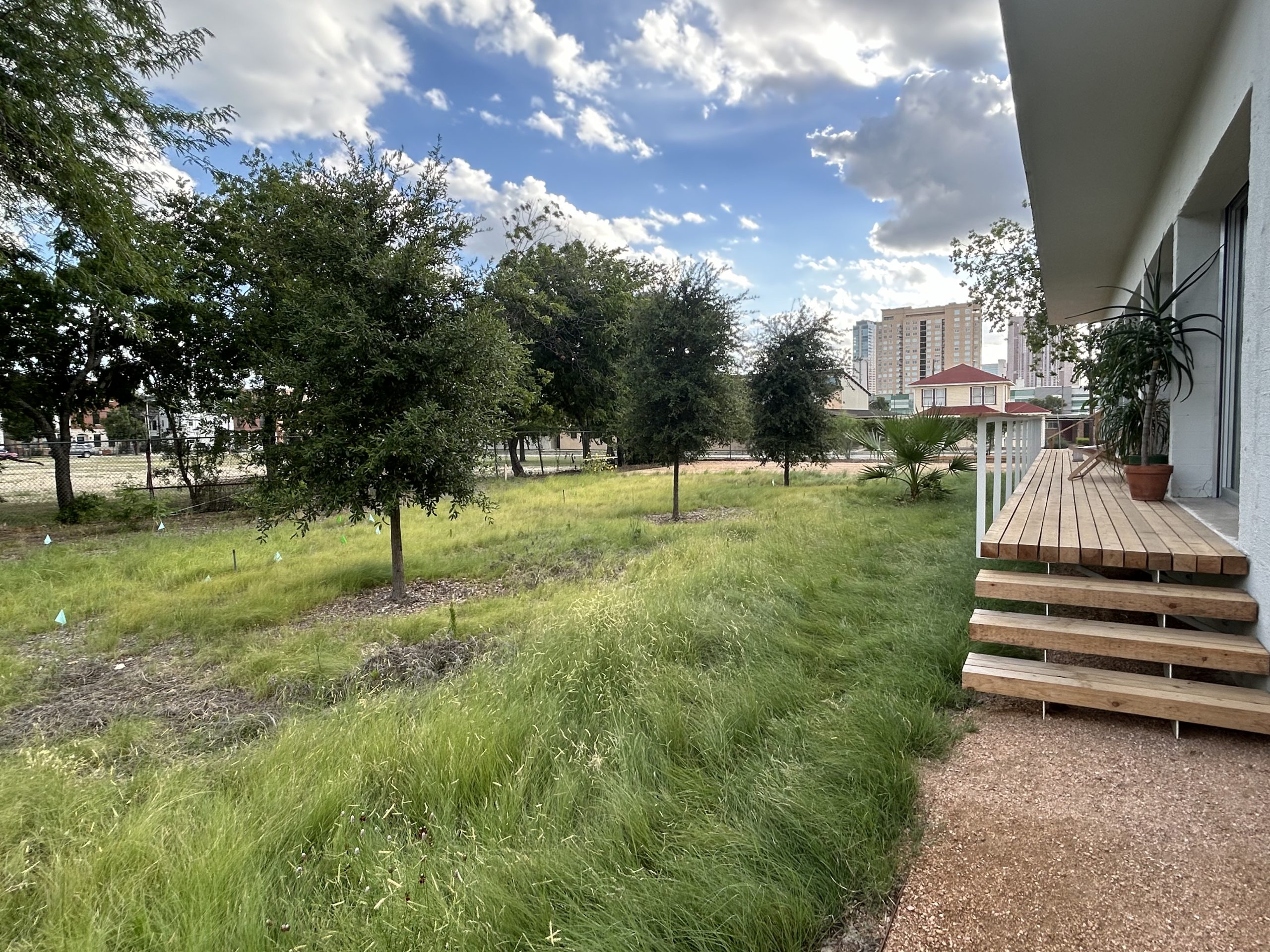
Estes’ urban prairie thrives not far from the Alamo with San Antonio’s downtown in the distance. –Photo by Monika Maeckle
Blue Grama, Lindheimer’s Muhly, Little Bluestem, and Sideoats Grama thrive in the former parking lot. A generous row of bluebonnets runs through the middle of the urban prairie, and occasional Mexican hats–Prairie coneflowers–peek through the savanna.
“Several people told us, ‘You guys are insane,'” said Estes, a soft-spoken Rhode Island native who moved to Texas in 2012 to work for Lake Flato architects, an award-winning firm known for its progressive outdoor ethos. Since 2018, she’s been running her own show.
While at Lake Flato, she worked on a project with Piet Oudolf, the famous Dutch garden designer of New York City’s Highline. That’s when she developed a deep appreciation for grasses and their ecosystem functionality of restoring soil and sequestering carbons–habitat chores that her asphalt-heavy property failed miserably to undertake.
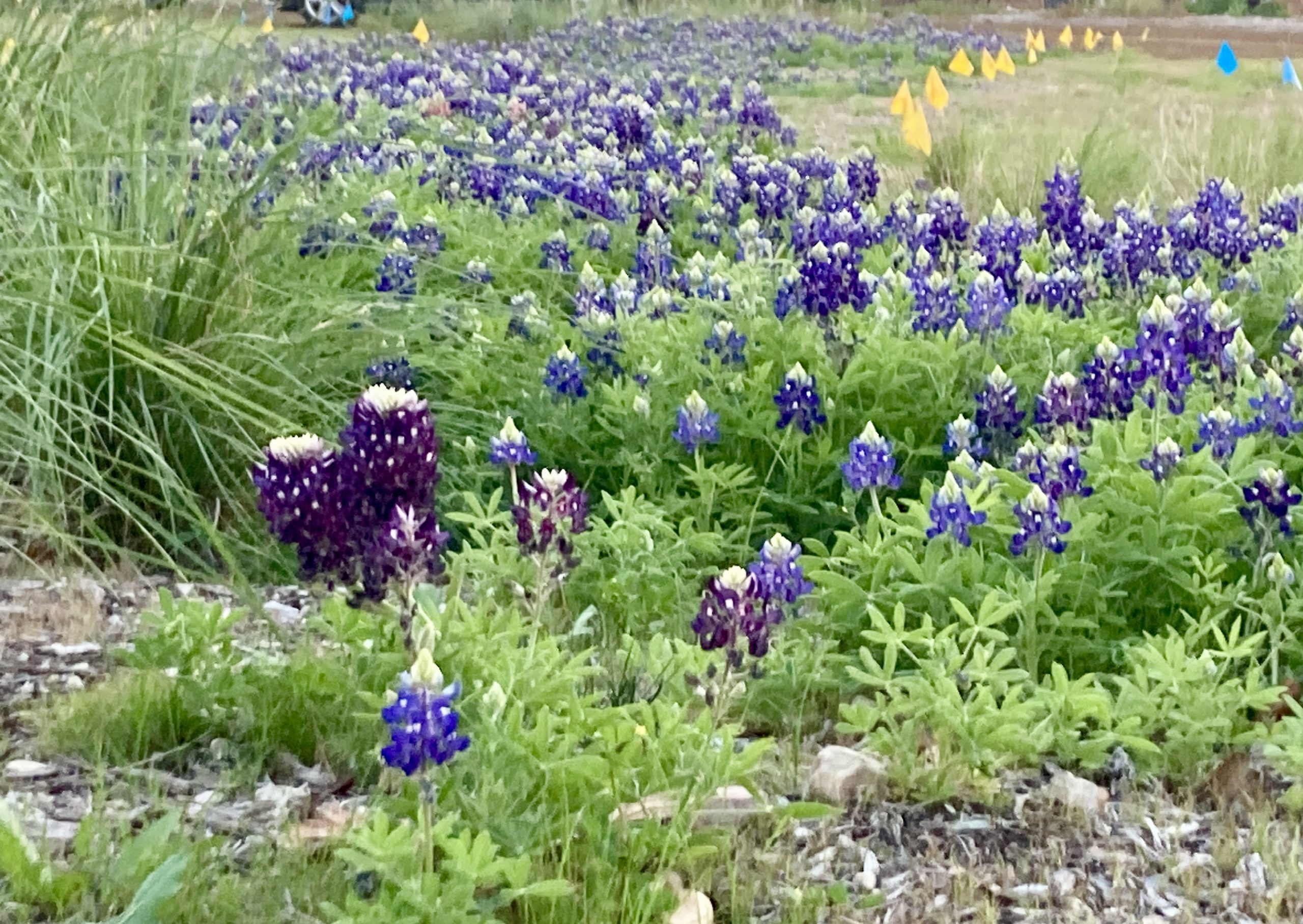
A median of bluebonnets run through the savanna at Estes’ Space Station. –Photo courtesy Cotton Estes
Located in the historic Dignowity Hill district on San Antonio’s East side, the tall grasses of Estes’ prairie require a three-year cycle in order to seed and reproduce. This long-stemmed look is not the typical landscape option in an historic district.
But as a professional architect, Estes prepared a Design & Concept document that includes an implementation plan and drawings that communicate her intentionality. She’s made it available to anyone who asks and has found the community and officials relatively understanding.
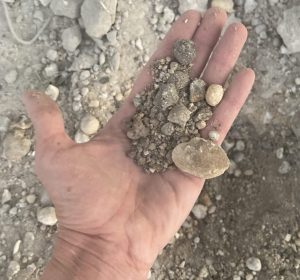
“Soil” at Estes’ Space Station. –Photo courtesy Cotton Estes
“So far, so good,” she said, offering that the no one has complained about her long haired grasses, nor do they mind the butterflies and birds that are visiting the yard with increasing frequency.
The couple’s first chore was asphalt removal–a daunting task of breaking up and carting off 5,600 square feet of concrete slab and asphalt.
About 2,000 square feet of that total was hidden just below a thin layer of dirt and Bermuda grass. It took days of jackhammering and dumpster filling to create a soil palette friendly enough to plant three Live Oak trees. When digging the holes for the trees, Estes and Long discovered yet another asphalt bed about three feet down, which they decided to leave intact.
Then the couple imported 400 cubic yards of hardwood mulch to cover the future prairie with a nine-inch layer of organic matter so as to kill undesirable plants and seeds as well as help build the soil. Several 18-wheelers delivered the 120 tons of mulch, which weighs an average 600 pounds per cubic yard.
“When the mulch arrived, it towered over the rooftop like a mountain,” Estes recalled.
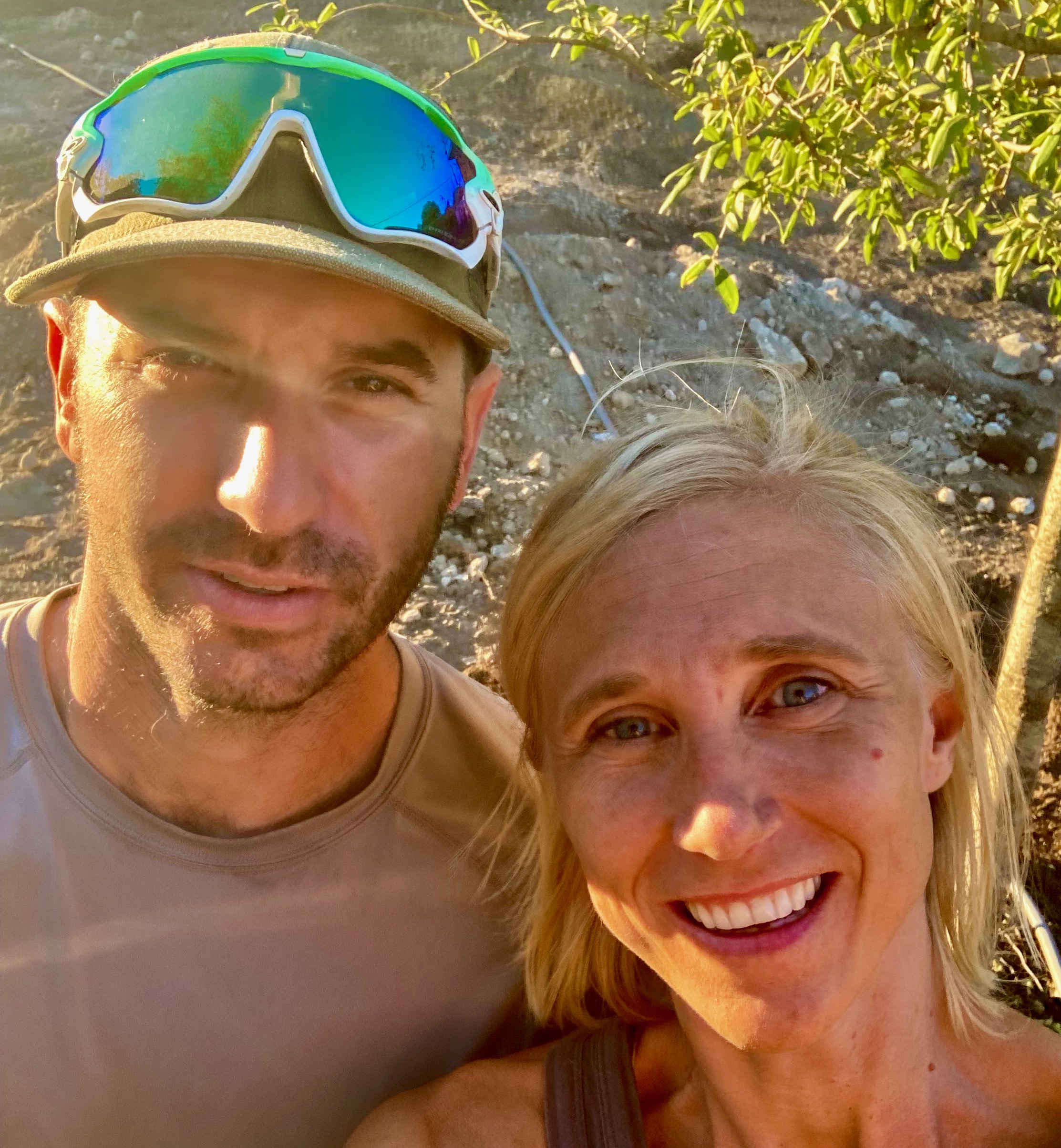
Mike Long and Cotton Estes. –Photo courtesy Cotton Estes
Luckily, Long is well versed in large machines and was able to assist with Bobcat lessons to spread the material, as well as raking sessions.”When we were done, we just lay down on the mulch and took a deep breath,” she recalled.
The lush grassland has had its setbacks. At one point, a big die-off occurred, and after consulting San Antonio grass expert Kelly Lyons, Estes realized they’d been underwatering. Estes and Long addressed the issue by installing strategic irrigation and the grasses “bounced back big time.”
Lyons lauded the project, labeling it a testament to the value of our native grasses.
“These plants are beautiful and tough but also provide wildlife habitat and feed many animals up the food chain, to include butterfly larva, beetles, and earthworms,” said Lyons, who teaches biology at Trinity University.
Lee Marlowe, president of San Antonio’s Native Plant Society of Texas chapter, was also impressed with the Space Station.
“It’s great to see such care, patience and energy put into this native garden transformation,” she said. “Prairies used to cover much of San Antonio, but there is very little remaining and this landscape helps bring back some of what was lost.”
Following the irrigation installation, Estes was relieved when the prairie recovered. “We were so happy when something living came out of the ground,” she recalled. “I thought for sure we were going to fail at this experiment.”
Most gardeners and landscapers focus on colorful flowers and beauty over utility. What motivated Estes’ strong commitment to grasses?
“Prairies are very endangered, almost extinct, so I thought it would be interesting to reintroduce them to a very challenging site,” she explained.
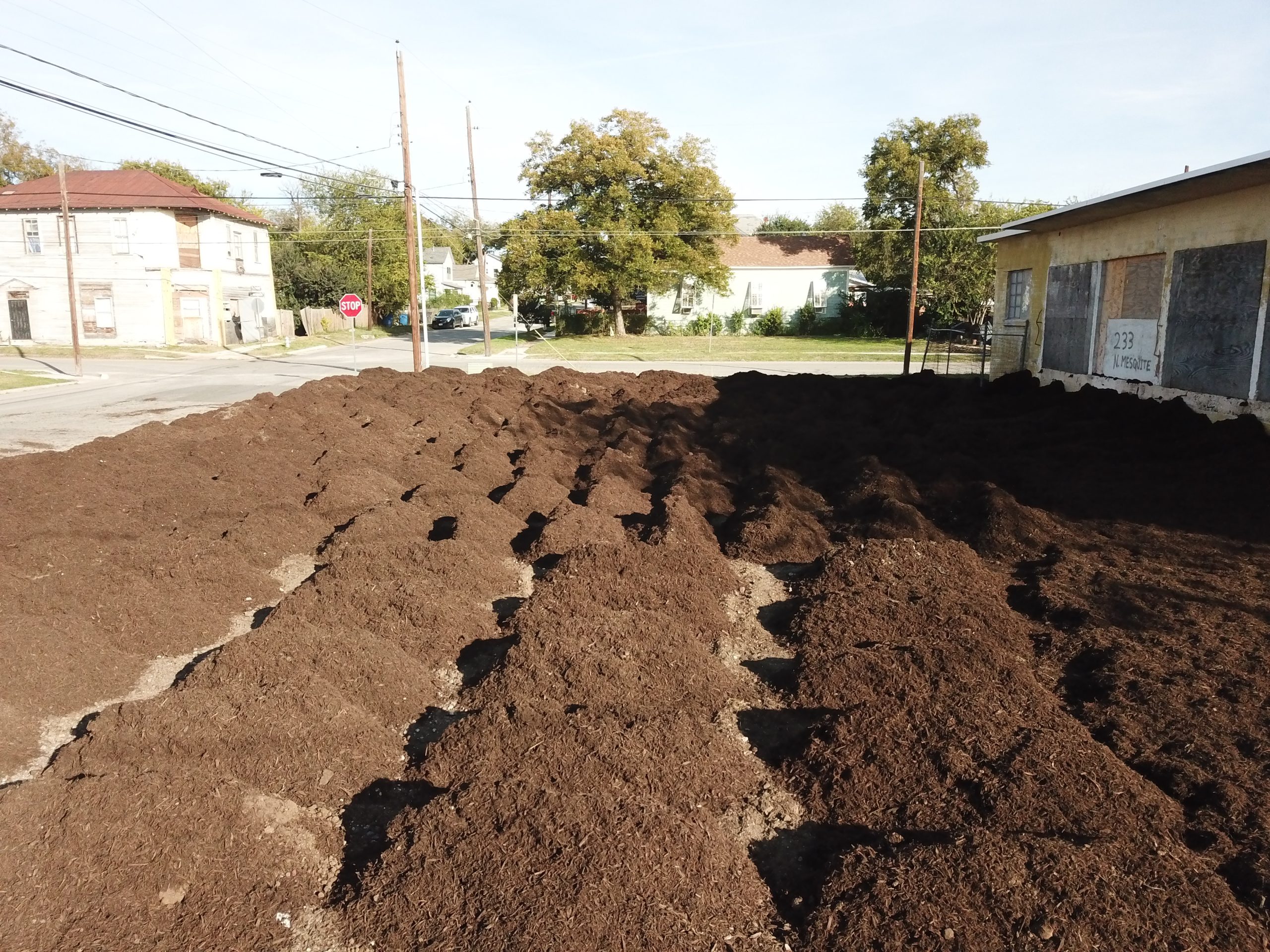
One hundred twenty tons of mulch, nine inches thick, were spread at the property. –Photo courtesy Cotton Estes
She pointed out that prairies work as hard as trees in combating urban heat island effects. “We were looking for something that takes on a life of its own, bold and resilient and adding diversity.”
More flowering species will join the bluebonnet patch once the primary grass lands are well established.
In the meantime, Estes’ ambitious vision is being realized. “It’s a process, not an end product, and I really hope we can inspire others.”
TOP PHOTO: Cotton Estes pulls weeds at her prairie restoration project at the Space Station in downtown San Antonio. –Photo courtesy Cotton Estes
Related Articles
- Wherehousebarn pollinator garden beckons butterflies and tenants to downtown San Antonio
- In the butterfly garden: use solarization to convert ugly grass into a vibrant butterfly garden
- Adding pollinator habitat to resilience gardens can boost yields and relieve stress
- HOAs resist native plant landscaping despite conservation benefits
- How to plan a successful butterfly garden
- Mostly native butterfly garden outperforms lawn every time
- Downtown River walk plot converts to pollinator garden, creature haven
- A year in the life of an urban butterfly garden
Like what you’re reading? Don’t miss a single article from the Texas Butterfly Ranch. Sign up for email delivery at the bottom of this page, like us on Facebook, follow us on Twitter, @monikam or on Instagram. And check out my book on the monarch butterfly migration!

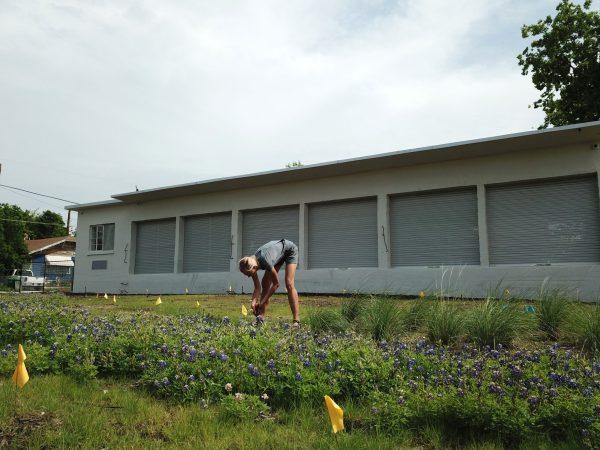

Nice article. Did solarization play a part in this transformation? Was removing the bermuda with a Cat the only option, given the site’s challenges?
What’s the budget for a project like this one?
Hey Ron,
I’ve forwarded your questions to Cotton. Stand by. –MM
Hi Ron, thanks for the questions!
1- Solarization was not used due to the scale of the site (0.41 ac) and location within a historic district downtown. The invasives were also eliminated over the course of four growing seasons, or 2 years, which may be a challenge with most solarization materials.
2- A bobcat was used to remove the asphalt and concrete, re-grade the site, and to distribute the truckloads of mulch across the site.
3- The most expensive parts of this project were cleaning and preparing the ex-industrial site in order to give native seedlings the best chance of success. In order of cost: 1) removal of parking lot and re-grading, 2) irrigation for establishment of seeds, 3) time weeding, which we do ourselves in this case, 4) mulch, 5) seed and small plugs. Unlike turf grasses, there will be no ongoing mowing or watering costs once the prairie is established.
Wonderful project and beautiful documentation from you!
Thanks Linda! You should feature them on the show! –MM
Inspiring. It can be done.
I just want to give you a heads up on the fight the bite program being used all over the country to kill mosquitoes, the one chemical piperonyl butoxide used in their program is extremely toxic. I have been raising butterflies for 8 years and every year things get worse as i see less and less bees. Now the caterpillars are dying when they get close to making their chrysalis !!! This happened last summer also , it started about 2 weeks after they started spraying. I head the monarch population is down 49%. Well soon we are not going to have any monarchs or bees or butterflies if this program is not stopped. People are completely clueless about this. Just giving you a heads up as this has got to stop!! The mayor off sugarland is just blowing this off. None of my neighbors use chemicals….thanks connie weinholtz
Wonderful project! Thanks for sharing your story and how-to example!
We are installing a similar project at our churches Ministry Center in San Antonio this fall, though smaller in size. I would love to know Mike and Cotton’s lessons learned and sourcing for mulch and plants. Great article, very inspiring. My contact info is below, are on site visits allowed? Thanks, Todd Phillips
Very interesting and inspiring! We are about to do a similar project in the front yard of Rose’s House, a home away from home for Breast Cancer Warriors. We currently have some grass and many weeds, we feel a natural environment would be much more soothing to the soul. We could use some help in the design and process to accomplish this.
http://www.roseshousellc.com